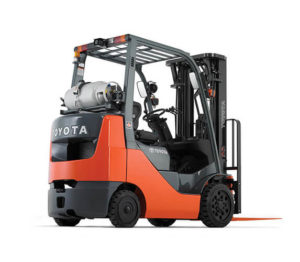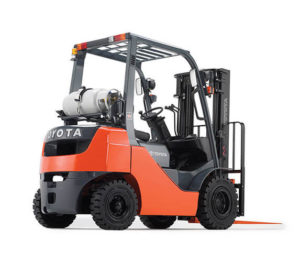This article answers the question: How much does it cost to rent a forklift?
Beyond that, you’ll also get:
- What factors are involved in the cost of forklift rentals
- The benefits of renting
- A step-by-step process for renting a forklift
Let’s dive in!
How Much Does it Cost to Rent a Forklift? A Full Pricing Breakdown (2025 Rental Guide)
To get the most useful and accurate pricing, we decided to see where most people are searching for “forklift rentals.”
So first, we used Google Trends to narrow down the top 8 locations in the US:
- New York, NY
- Dallas, TX
- Los Angeles, CA
- Kalamazoo, MI
- Nashville, TN
- Lancaster, PA
- Denver, CO
- Orlando, FL
Then, we searched the major rental houses for each location and found rates for common types of forklifts they offer.
Finally, we averaged those rates across each location to get the average nationwide forklift rental prices.
Here’s what we found:
Class 1: Electric Motor Rider Trucks
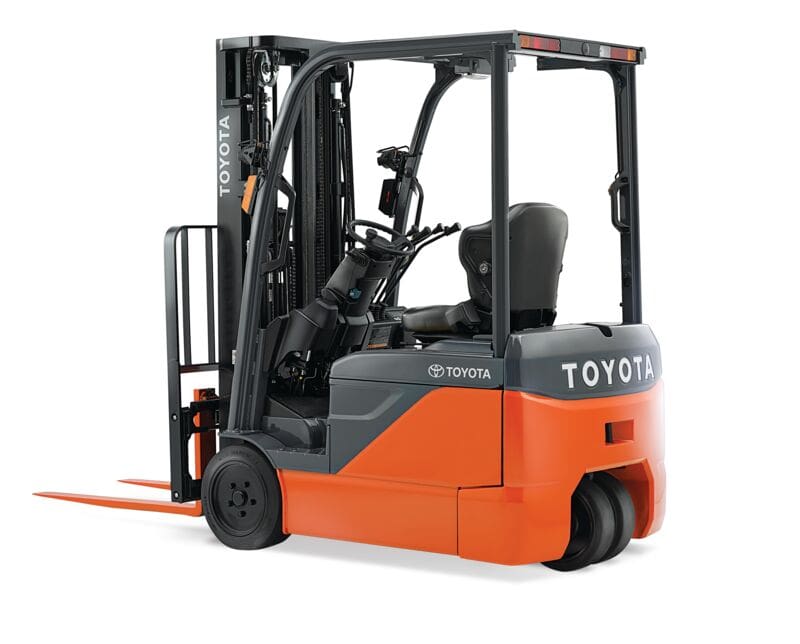
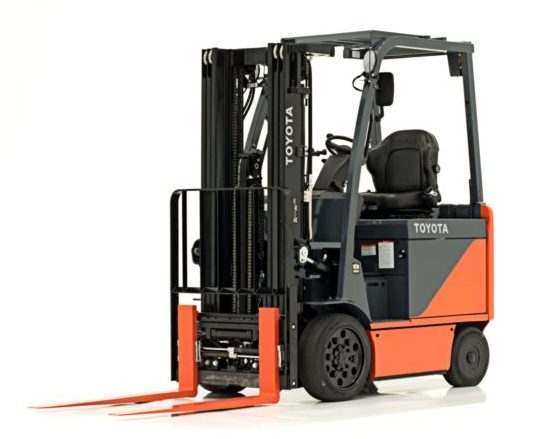
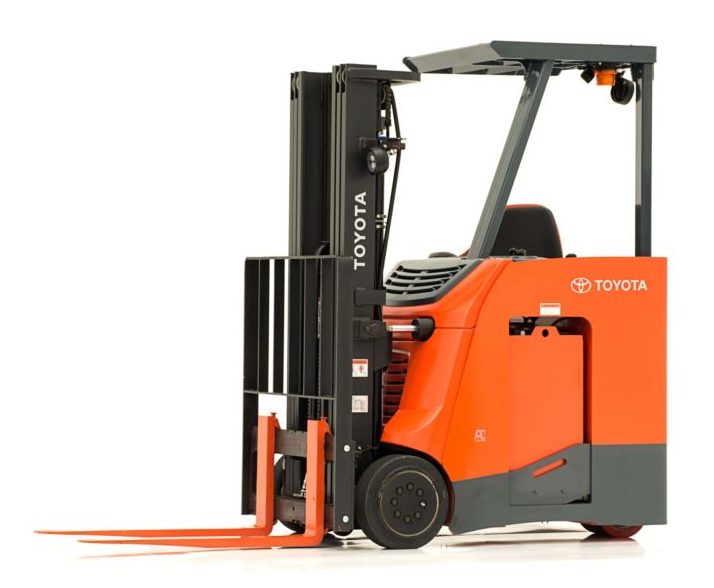
Electric motor rider forklifts include sit-down counterbalanced and stand-up rider trucks.
Overall, they’re best used for warehousing, food processing and storage, and retail – among many other applications.
Wondering how much does it cost to rent an electric forklift?
Here’s the answer:
3 & 4-Wheel
| Capacity | Day | Week | Month |
|---|---|---|---|
| 4,000 lbs. | $305 | $765 | $1,975 |
| 5,000 lbs. | $311 | $793 | $1,995 |
| 6,000 lbs. | $244 | $691 | $1,827 |
Stand-Ups
| Capacity | Day | Week | Month |
|---|---|---|---|
| 3,500 lbs. | $300 | $740 | $1,831 |
| 4,000 lbs. | $305 | $800 | $2,100 |
Class 2: Electric Motor Narrow Aisle Trucks
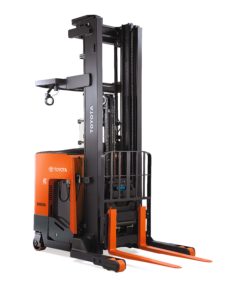
Electric narrow aisle forklifts include both reach trucks and order pickers.
These lift trucks are designed to fit in tight aisle spaces and are used for picking and placing inventory in pallet racking.
Reach Trucks
| Capacity | Day | Week | Month |
|---|---|---|---|
| 3,500 lbs. | $140 | $385 | $1,250 |
| 4,500 lbs. | $150 | $500 | $1,350 |
Order Pickers
| Capacity | Day | Week | Month |
|---|---|---|---|
| 3,000 lbs. | $130 | $380 | $1,220 |
Class 3: Electric Motor Hand or Hand-Rider Trucks
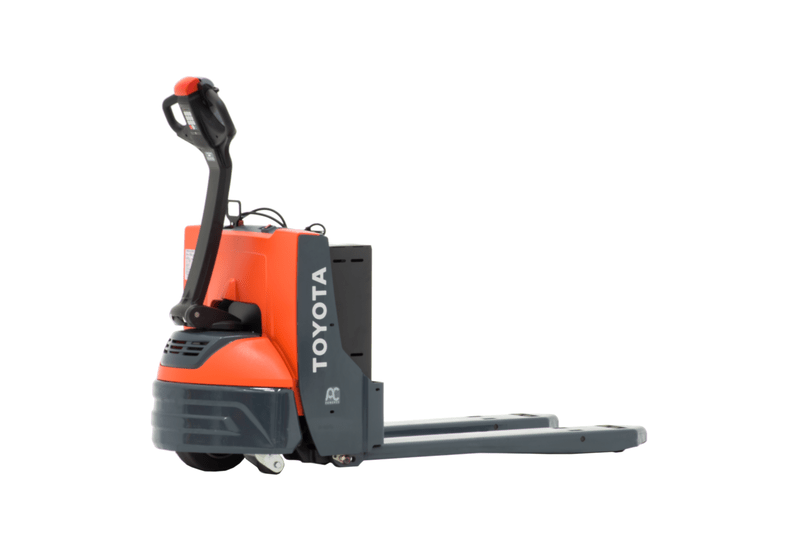
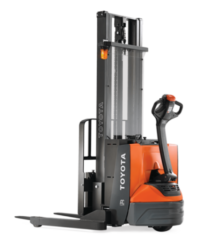
Electric motor or hand-rider forklifts include pallet jacks and stackers, which are designed to maneuver in tight spaces.
You’ll find these trucks in general warehousing, logistics, and manufacturing.
Electric Walkie Pallet Jacks
| Capacity | Day | Week | Month |
|---|---|---|---|
| 4,500 lbs. | $129 | $406 | $962 |
Walkie Stackers
| Capacity | Day | Week | Month |
|---|---|---|---|
| 2,500 lbs. | $190 | $487 | $1,268 |
Class 4: Internal Combustion Engine Trucks – Cushion Tires
One of the most common classes of forklift, internal combustion (IC) cushion tire forklifts are designed for indoor operations on flat, smooth ground.
Pricing for IC cushion forklifts is as follows:
| Capacity | Day | Week | Month |
|---|---|---|---|
| 5,000 lbs. | $259 | $639 | $1,654 |
| 6,000 lbs. | $266 | $658 | $1,704 |
| 8,000 lbs. | $420 | $957 | $2,366 |
| 15,000 lbs. | $659 | $1,754 | $3,973 |
Class 5: Internal Combustion Engine Trucks – Pneumatic Tires
Class 5 forklifts are almost the same as class 4 forklifts, except that they are designed primarily for outdoor usage.
With either air or foam-filled tires, these trucks work well in applications like lumberyards and construction.
Pricing for IC pneumatic forklifts is as follows:
| Capacity | Day | Week | Month |
|---|---|---|---|
| 3,000 lbs. | $255 | $695 | $1,764 |
| 5,000 lbs. | $249 | $643 | $1,610 |
| 6,000 lbs. | $289 | $724 | $1,851 |
| 8,000 lbs. | $337 | $845 | $2,137 |
| 10,000 lbs. | $403 | $1,032 | $2,755 |
| 12,000 lbs. | $408 | $997 | $2,946 |
| 15,000 lbs. | $631 | $1,703 | $3,950 |
| 20,000 lbs. | $526 | $1,956 | $4,896 |
| 25,000 lbs. | $952 | $2,722 | $7,004 |
| 30,000 lbs. | $1,049 | $2,916 | $6,963 |
Class 7: Rough Terrain Forklift Trucks
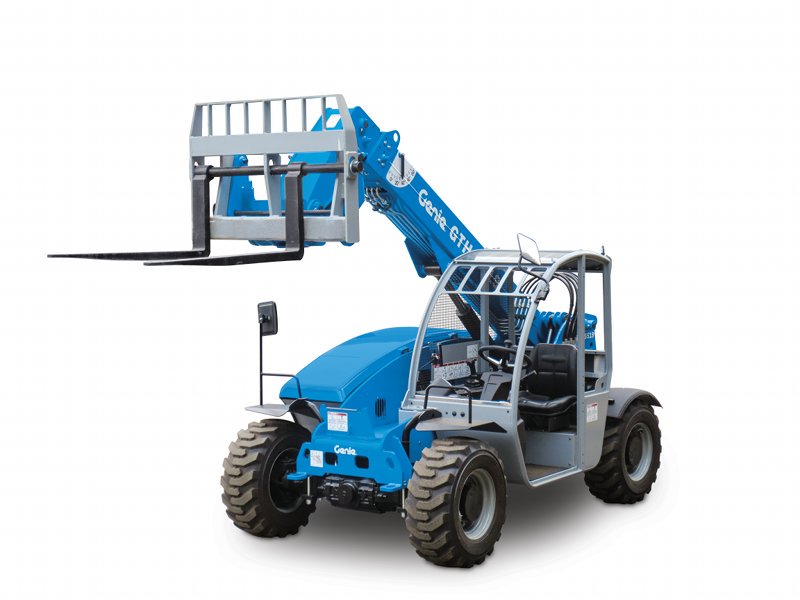
Rough terrain forklifts are designed for – you guessed it – rough terrain applications.
There are two types of rough-terrain forklifts:
- Straight mast
- Telehandler
Straight mast models have oversized drive tires and diesel engines, making them great for lumberyards and construction.
Telehandlers, on the other hand, feature telescoping booms and are often used on building sites to lift materials onto higher levels.
Here are the rough terrain forklift rental rates:
Straight Masts
| Capacity | Day | Week | Month |
|---|---|---|---|
| 6,000 lbs. | $378 | $1,068 | $2,353 |
| 8,000 lbs. | $433 | $1,209 | $2,621 |
| 10,000 lbs. | $393 | $1,005 | $2,519 |
Telehandler Rental Rates
| Capacity | Day | Week | Month |
|---|---|---|---|
| 5,000 lbs. (19′ height) | $411 | $1,056 | $2,460 |
| 6,000 lbs. (42′ height) | $458 | $1,196 | $2,723 |
| 8,000 lbs. (42′ height) | $498 | $1,350 | $3,111 |
| 10,000 lbs. (42-48′ height) | $689 | $1,854 | $4,368 |
Hopefully, this gives you a good idea of what you can expect to pay if and when you decide to rent a forklift.
What Costs Are Involved in Renting a Forklift?
Renting a forklift is just like renting any other asset.
You agree on what you want, sign the contract, and pay.
But beyond that, it’s important to be aware of extra expenses you can incur that are not covered by the flat rental fee.
Let’s go through some of those expenses.
Fuel Costs
Forklifts come in several fuel options including:
-
Propane (LPG)
-
Gasoline
-
Compressed natural gas (CNG)
-
Diesel
-
Electric
You’ll generally need to pay for the fuel you use, just like if renting a car.
The exception is with electric lift trucks.
In that case, the fuel is the battery.
And often, the electric lift truck will have the battery and charger included in the cost.
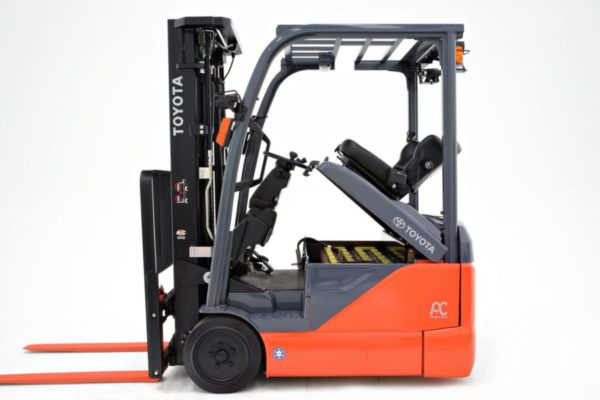
If you’re renting an LPG lift truck, you can rent an LP tank if you don’t have one.
If you use all the fuel in the tank, however, you’ll be responsible for lining up a gas company to refill it.
That’s because the rental company usually doesn’t provide this service.
Transportation Costs
You’ve got to get your lift truck from the rental house to your location.
But if you don’t have a truck of your own, you have a couple of options:
- You can hire a rental house to deliver it.
- You can hire a 3rd party to haul it.
The shipping cost depends, of course, on the distance you are from the rental house.
But at minimum, expect to pay $100 for local shipping (one-way).
From there, the costs can rise to hundreds of dollars – even up to $1,000 or more for long deliveries.
Maintenance
Routine forklift maintenance – like oil changes, light bulb replacement, and fuel filter replacement – is often included in the price of a forklift rental.
For instance, Conger covers these items, so you won’t need to pay extra.
But this policy can vary from rental company to rental company.
So, it’s best to ask your rental partner what their maintenance policy is.
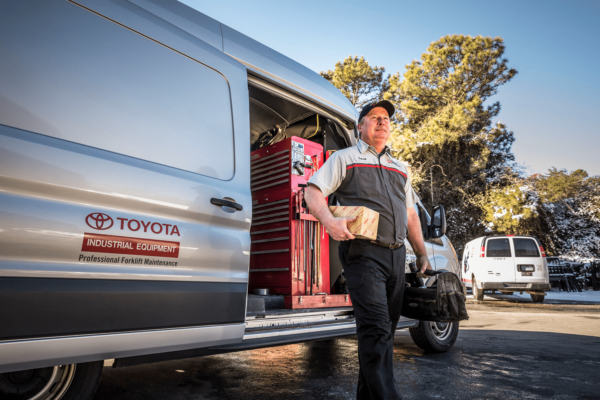
Be aware, however, that you’ll be responsible for any repairs beyond routine maintenance.
For example, excessively worn tires, damaged or bent forks, and torn seats will likely fall outside the policy.
In that case, you’ll need to pay out of pocket to cover these costs.
Overtime
Most rental companies specify that a “day” rental is 8 hours, a week is 40 hours, and a month is 160 hours.
These correlate to a single-shift operation.
If you exceed these usage limits, you may be on the hook for overtime charges.
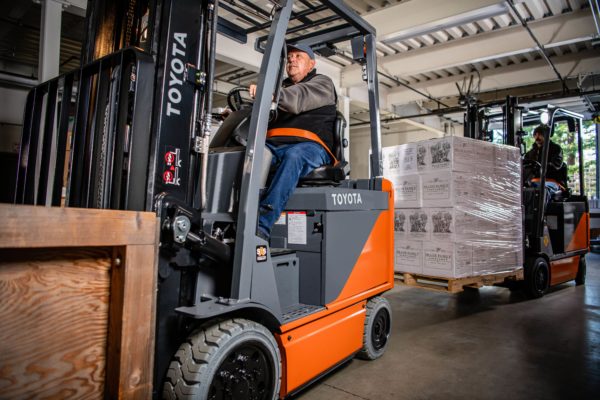
Generally, these charges are proportional to the expense of the lift truck.
So a 3,000 lb. 3-wheel electric forklift will have smaller overtime fees than a 15,000 lb. diesel lift truck.
You can expect to pay between a few dollars per hour of overtime up to $30 or more for the biggest lift trucks.
Returns Fees
If you’re renting a forklift for use in a dirty or destructive application, be prepared to spend more.
Most rental contracts will have a clause specifying the condition the lift truck must be returned.
If returned damaged or excessively dirty, you’ll be on the hook for those repair or cleaning costs.
So, take the time to wipe down or wash your lift truck before returning it.
Try to keep an eye on your operators to ensure they’re taking care of the equipment.
Attachments
If you require a specialty attachment, expect to pay more.
Typically, a forklift will come equipped with a standard side shifter.
And for that, you aren’t likely to be charged.
But if you need, for example, a carton clamp, paper roll clamp, or slip sheeter, you’ll be charged an additional rental rate on top of what you pay for the lift truck.
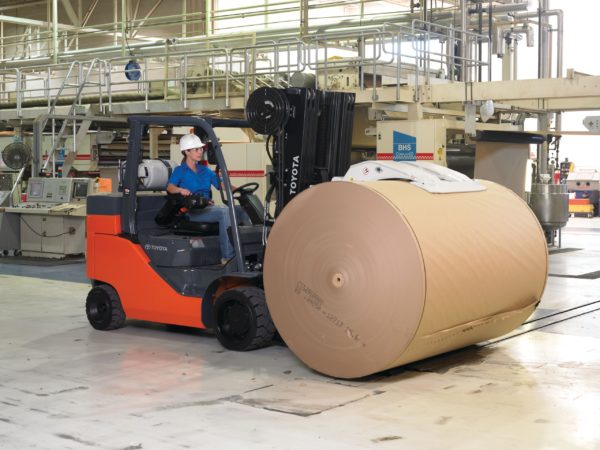
How much will that be?
Typically, the cost varies by the type and size of the attachment.
For example, renting a small electric forklift for a warehouse won’t cost as much as a heavy-duty rough-terrain forklift with pneumatic tires needed for a construction site.
Generally, you can expect to pay at least $100 per day, $200 per week, and $500 to $1,000 per month.
Operator Training
Are you or your employees trained and certified to operate a lift truck?
You may or may not know, but OSHA requires that operators be trained according to their standards.

If you’re not, you’ll have to arrange forklift operator training.
This can cost several hundred dollars per person.
Insurance
Just like with any equipment or asset, insurance is important to protect yourself from financial damages.
Generally, forklift rental houses provide their insurance to cover their equipment.
But in the case that the forklift, while on your premises, is damaged, destroys infrastructure or product, or injures someone, you’ll need to make sure that you’re covered.
The best way to find out if you’re covered is to contact your insurance company.
What Factors Affect Forklift Rental Rates?
You now know what’s usually included in forklift rental costs.
But at a higher level, there are additional factors that can affect what you’ll pay for a forklift rental.
Let’s go through some of the major ones.
Design and Configuration
The type of lift truck you need will have a major impact on the price you pay to rent it.
A “bread-and-butter” lift truck – like the common warehouse 5,000 lb. cushion-tire forklift – will cost much less to rent compared to an explosion-proof lift truck of the same lift capacity.
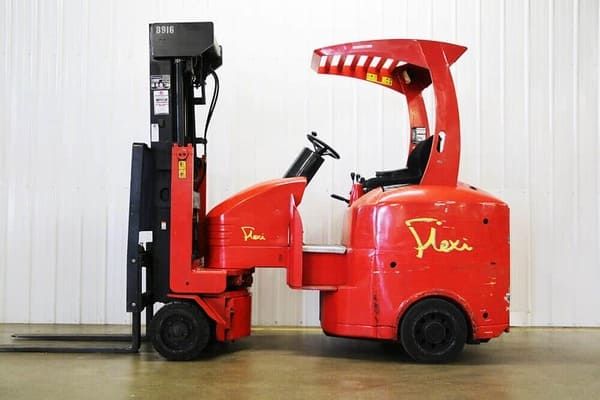
Specialty equipment, like articulating mast lift trucks, turret trucks, and side loaders are less common on the market and likely to cost more to rent.
Other configurations, like extra-tall mast models, cold storage, and high-capacity lift trucks will also add to the price of the rental.
Location
Your location also plays a part in determining “how much does it cost to rent a forklift?”
For example, we found that the daily rates for a 5,000 lb. capacity cushion-tire internal combustion forklift ranged from a low $222 in Los Angeles, CA to a high $292 in Lancaster, PA.
This makes sense, as you’d expect the price to be lower in a larger city than in a smaller city (since larger cities have a greater supply of lift truck models).
But this isn’t always true.
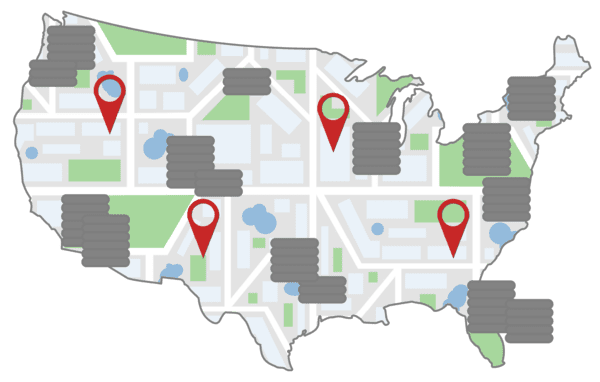
And that makes locality a correlated factor on price – not a causative factor.
For instance, we also found that a 5,000 lb. capacity electric forklift costs a low $285 in Lancaster compared to a high $353 in Orlando, FL.
Regardless, the simple point is this: The location where you’ll need your lift truck can have an impact (positive or negative) on the price.
Capacity
Put simply, the bigger the fork truck, the more expensive it is to rent.
It’s no different than renting a large SUV versus a small hatchback.
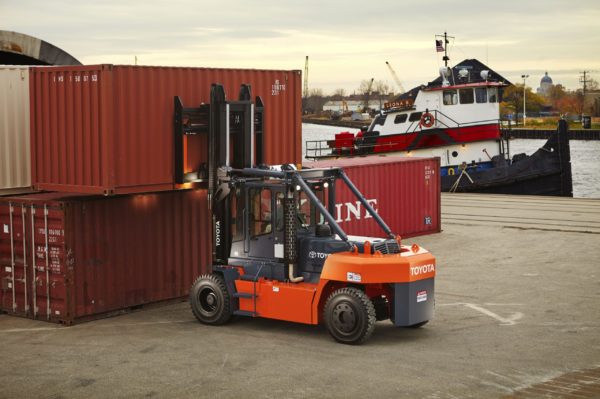
After all, larger equipment requires more money to operate and to service.
So it only makes sense that it’ll cost more than smaller equipment.
Rental Duration
How long do you plan to rent your forklift?
This can make a big difference in what you pay for it.
Generally, rental prices are set up so that the longer the rental period, the lower the overall cost.

For example, Conger’s weekly rental rates are roughly equivalent to 3 days’ rent.
And a monthly rental rate is equivalent to 2 weeks and 3 days’ rent.
So in effect, you get 4 days free when you rent for a week.
And you get a week and 4 days for free when you rent for a month.
Additionally, you may be able to score a long-term discount from the rental house.
We at Conger offer a 10% discount on rentals 6 months or longer.
Fortunately, it’s as simple as asking if they offer a discount.
So make sure you do!
What Are the Benefits of Renting a Forklift?
A common question that comes up is: Is it better to buy, lease, or rent a forklift?
We’ve covered everything there is to know about forklift leasing and buying in our article called Forklift Leasing: The Ultimate Guide.
So let’s focus just on the benefits of renting here.
No Long Term Commitment
Renting provides a way to use a forklift for a limited time – anywhere from a day to a year or more.
This is a perfect option for businesses whose commitments aren’t set in stone yet.

For example, you may only need to unload a single truck.
Or, you may have picked up a short-term contract with a new customer.
For both of these cases, there’s no need to buy a lift truck – just rent instead.
Maintenance Is (Usually) Included
Forklift maintenance can be an expensive thing.
Surely, it’s cheaper than forgoing it and waiting for major repairs to happen.
But it’s still something extra you have to pay for when buying a forklift.
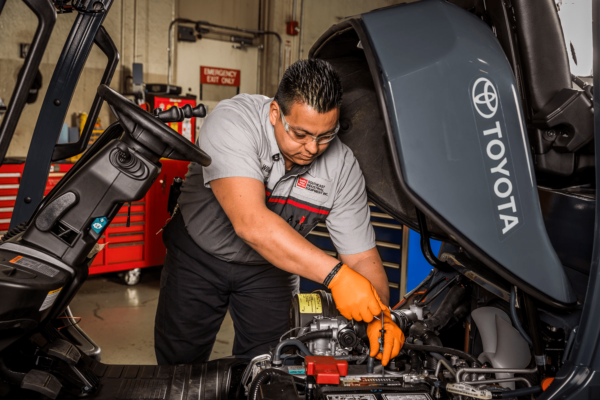
That’s generally not the case when renting a forklift, as most rental houses include maintenance in their rental rates.
In that case, you can have peace of mind knowing that any issues that come up will be taken care of – without you having to open your wallet.
Try Before You Buy
Renting offers an excellent benefit in the form of being able to test your equipment before you make a longer commitment.
Even if you’re looking to buy your fork truck ultimately, renting an equivalent model is a low-cost way to make sure that it’ll work for your application.
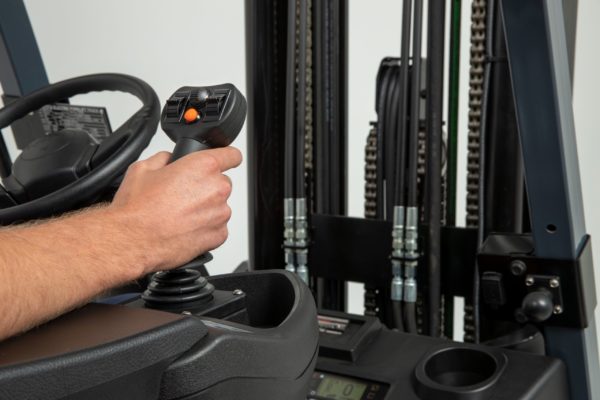
Doing so will allow you to make sure the lift truck can:
-
Handle the loads you need it to handle
-
Fit into the working space that you have
-
Be compatible and liked by your operators
Additionally, if you rent a new forklift, you can test out the latest productivity and forklift safety features.
That way, when you’re ready to buy, you’ll know for sure what you need.
Tax Advantages
One of the major considerations when deciding to rent, lease, or buy your lift truck is how it will affect your taxes.
In the case of renting, the cost can sometimes be considered an expense.
If that’s the case, you can write that off on your taxes, saving you money.

Plus, you don’t have to deal with the accounting headaches of depreciating assets.
To know for sure what the tax situation is when renting, it’s best to check with your tax adviser.
How to Rent a Forklift: A Step-By-Step Guide
Renting a forklift is a fairly straightforward process.
But there are a few things you’ll want to be clear on before you set out to do it.
Let’s go through those considerations here.
Get Clear on What You Need
What are you trying to accomplish with your lift truck rental?
Do you need to unload semis?
Do you need to handle heavy construction materials?
Do you need to access tall racking with tight aisles?
You’ll need to be clear on these questions so that you can decide what you need for:
-
Capacity
How much weight do you need to lift? Remember that the rated capacity of a lift truck is almost always lower than the actual lift capacity. So when in doubt, go bigger.
-
Lift Height
If you only need to load or unload a semi-trailer, a standard-sized mast should suffice. But if you need to access 20+ foot tall racking, you’ll need a specialty mast.
-
Height or Space Restrictions
What is the height of the lowest door you’ll need to fit the lift truck through? The last thing you want is the time, hassle, and expense of renting a fork truck that won’t fit through your door!
-
Fuel Type
Does the environment you’re working in require a certain type of fuel? For instance, food processing facilities may require electric power. Or, if you’re working in heavy-duty industries, like lumber or construction, you may have the power of a diesel forklift.
-
Working Environment
Are you working indoors or outdoors? Is it in a cold or sensitive environment? The answers to these questions will help you (or the rental house) decide what type of lift truck is best for your application.
Beyond that, there are some other questions you should ask and answer, like:
- Where will you need it?
- Is it a dock load or a ground load?
- When will you need it delivered?
- When will you need it picked up?
- Who’s your site contact? Are you arranging the lift for someone else? Make sure to provide contact information for whoever is on-site for the delivery driver to communicate with
You can check out Conger’s online forklift rental request form, which covers the main questions we ask of our customers when they want to rent a forklift.
By getting clear on all these items, you’ll be in a much better spot to make the rest of the rental process much easier.
IMPORTANT! Don’t assume the company will just call off the rent if you tell them upfront when you’ll be done with it. Make sure to call yourself when you’re done!
Get Your Documents in Order
Normally, there shouldn’t be too much involved in this step.
The main documents you may need are proof of insurance and a payment method.
Just make sure to have those items ready in case it’s needed by the rental house.
Find a Rental Company
You may be wondering: Where can I rent a forklift?
There are 2 main options for where to rent a forklift:
- National rental companies
- Local forklift dealers
Some examples of national rental companies include Sunbelt, United Rentals, Fabick, BigRentz, and Herc.
Some of these companies have their fleet of equipment, while others simply coordinate with local forklift dealers to line up equipment for their customers.
Working with these companies is as simple as clicking the above links and following the instructions on their websites.
The other option – individual, local forklift dealers – will involve a little googling.
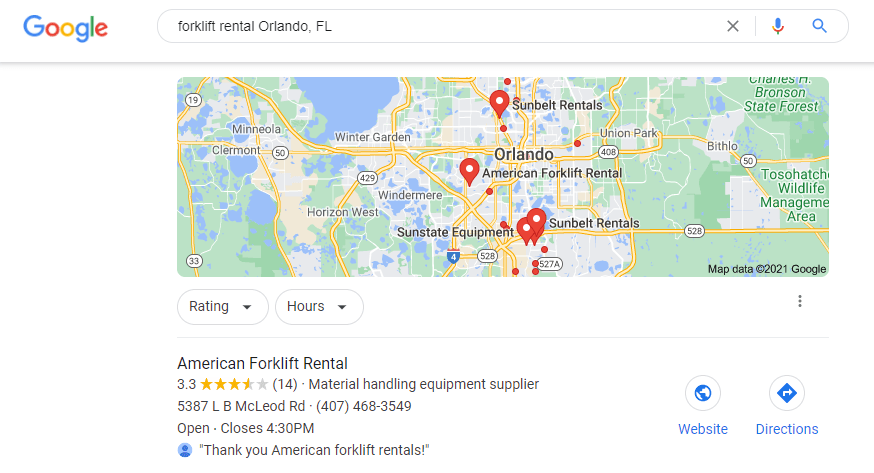
Simply search “forklift rental near me” or “forklift rental [your city]” to find some popular ones.
Should You Go National Or Local When Renting a Forklift?
As mentioned, some national companies have their forklifts.
Others simply rent from local dealers to fulfill their orders.
But is it better to use these national companies or a local dealer?
The answer is that it has to do with convenience versus cost.
National dealers will likely cost more than their local counterparts.
Why?
Because when they source their equipment from local dealers, they’ll add a markup to the local dealer’s cost.
And of course, that cost gets pushed onto you, the renter.
But what about convenience?
It can be easier to use national companies to source your equipment – especially if you need to rent a lift truck in a location that you don’t live or work in.
But if you choose local, you may have to do some calling or searching around to find the company that has what you need.
In the end, if you’re after convenience, national lift truck rental companies have something to offer.
But if you want to save money, it’s better to go local.
Get Clear on the Rental Costs
Recall the factors that can affect rental rates.
Then, make sure that you’re clear on what is and what is not included in them.
To recap, you should ask about:
-
Fuel
How much to rent an LP tank? Are a battery and charger included with electric lift truck rentals? What’s the penalty for bringing a gasoline or diesel lift truck back that’s low on fuel?
-
Shipping
How much will it cost for delivery and pick up? Is there an extra charge for ground loads versus dock loads?
-
Attachments
If you need an extra set of forklift forks or another attachment, what is the cost for that?
-
Return Fees
Does the lift truck need to be washed before returning? If not, what are your cleanup fees?
-
Overtime
How many hours of use are allowed on the contract? What’s the charge for going over?
-
Maintenance
Is maintenance included in the cost of the rental? What maintenance items are covered? What items are not?
And if there’s anything you’re unsure about, make sure to ask for clarification.
Sign and Pay
Once you’ve gotten clear on everything, the only thing left is to sign the contract and pay.
Just look it over before doing so and make sure you’re on the same page with all the details.
And if you are, sign it!
As far as payment goes, if you don’t have an open account, you’ll need to provide payment upfront.
Many companies accept or prefer credit cards for these transactions.
But they may be open to other forms of payment.
Just ask!
Questions Related to How Much Does It Cost to Rent a Forklift
What is the price list for a forklift rental?
Forklift rental prices are not one-size-fits-all. Factors like the forklift type, lift capacity, features, engine type (such as diesel-powered, gasoline engine, or electric forklifts), and rental company pricing influence the cost. It can range from under $100 daily to thousands, so request a quote for a more accurate estimate.
How much does operating a forklift cost?
Consider fuel costs (or charging if electric), routine maintenance (unless included in the rental), potential repairs, and labor (paying your forklift operator). These extra expenses go beyond the rental price itself.
Are forklifts expensive to purchase?
A standard, brand-new sit-down rider forklift might cost around $30,000. However, factors like the brand, lift capacity, age (new vs. used), added features, whether it’s a cushion tire forklift, and tire type impact the final price. See our article about forklift prices for more details.
Are 5000 hours a lot for a forklift?
Just like asking if a car with 100,000 miles is a lot, it depends on various factors. A well-maintained forklift, even a rental forklift, can last well beyond 5000 hours. Understand the machine’s usage history and any prior issues before renting.
Conclusion
As you’ve learned, there’s no simple answer to “How much does it cost to rent a forklift?” The cost depends on the forklift type, load capacity, rental period, location, rental company, and extra fees. Start by identifying your needs, shopping around, and carefully considering these factors before choosing.
![How Much Does it Cost to Rent a Forklift? [2025 Prices]](https://www.conger.com/wp-content/uploads/2021/08/How-Much-Does-it-Cost-to-Rent-a-Forklift-Featured-Image-Final-min.png)
